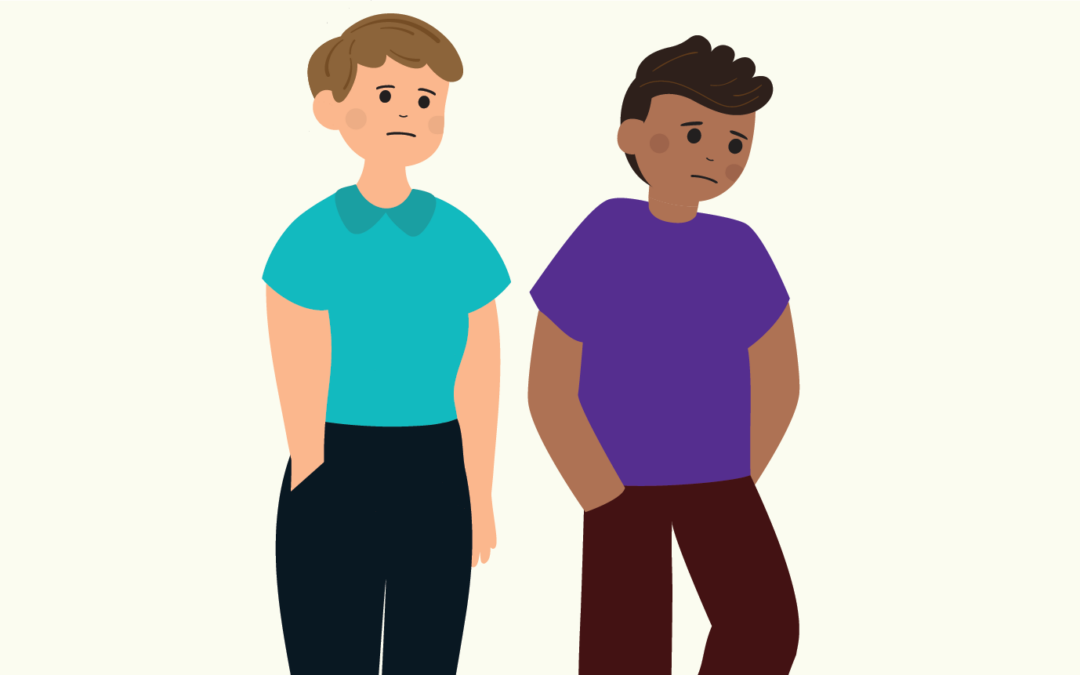What is suicide?
Suicide is when someone chooses to end their life. It can affect anyone, no matter their background, age, or situation. Some groups, like Aboriginal and Torres Strait Islander peoples, LGBTIQA+ people, and veterans, may be at higher risk.
Who can have a conversation about suicide safely?
Anyone can have a conversation about suicide if done safety and respectfully. Safely talking about suicide can lead to life-saving prevention and intervention. Your words and actions can save a life.
Before starting the conversation, ask yourself:
Can I speak calmly and with empathy?
Can I listen without judging?
Do I have the emotional space to have this conversation without it hurting my own wellbeing?
If you can answer ‘yes’ to these questions, you may be ready to reach out. Remember, you don’t need to be a mental health professional to make a difference – just being there to listen can be a powerful first step.
If you answered no to any of these questions, that’s okay. You can reach out to someone else in your community to help by having the conversation. Simply tell them what you’ve seen or felt and ask if they have the capacity to ask. We can all work together to help prevent suicide.
What do I need to know to have a safe conversation about suicide?
Talking about suicide can be hard, but it can also save lives. The Mental Health First Aid (MHFA) guidelines on suicidal thoughts and behaviours outline some simple steps for having a safe conversation:
-
- Be ready: Think about how you feel about suicide and how this might affect your ability to help. The most important thing is that you genuinely want to support the person.
- Look for signs: Know the signs that someone might be thinking about suicide. This can include talking about wanting to die, withdrawing from others, or acting recklessly.
- Be ready: Think about how you feel about suicide and how this might affect your ability to help. The most important thing is that you genuinely want to support the person.
-
- Use clear language: Don’t be afraid to use the word ‘suicide.’ Ask direct questions like, “Are you thinking about suicide?” or “Are you having thoughts about ending your life?” Avoid vague or judgemental language, like, “You’re not thinking about doing something silly, are you?”
-
- Listen without judgement: Stay calm and focused. Let the person share their thoughts and feelings without interrupting or dismissing their concerns.
-
- Respect privacy but don’t promise secrecy: If someone’s safety is at risk, you might need to tell others. Being clear about this from the start can help build trust.
-
- Connect to further safety and support: Assist the person to find the safer supports, like a crisis helpline, a doctor, or a workplace support service.
When should I have a conversation about suicide?
It’s a good idea to talk about suicide as soon as you notice signs or have a gut feeling that someone may be in distress. It’s more important to ask and hear a “no” than to stay silent and miss the chance to help. At the very least, the person will know they can come to you if they ever do have thoughts of suicide – and that talking about them is okay.
Research tells us that many people thinking of suicide feel they are looking for ways to escape pain and often think they are a burden to their loved ones around them. By starting the conversation, it may be the first time they are able to share how they feel and being heard can be a huge relief to their distress.
Where should I start the conversation?
Find a quiet, safe place where the person feels comfortable. Make sure you have enough time to talk without being interrupted and be ready to listen.
Why should I talk to my friends, family, and colleagues about suicide?
Talking about suicide can reduce stigma, encourage people to seek help, and can even help to save lives. It shows others they are not alone and that their pain is seen. It can help create a more supportive and caring community.
How can I empower myself to have these conversations?
You can build your confidence by learning more about suicide prevention, understanding the warning signs, and practicing compassionate listening. MHFA courses can provide valuable skills and knowledge to support others safely and effectively. Even small gestures of care can make a big difference.
What should I do after I’ve had the conversation and connected them to further support?
Supporting someone through crisis can be challenging and tiring. After you’ve connected the person to further support, it’s important to take care of your own wellbeing. This could include talking to someone you trust, taking time to rest and reflecting on your own emotional needs. If you would like more guidance or ideas, you can read more about self-care when helping others.
If you or someone you know needs support, Mental Health First Aid encourages you to reach out to Lifeline | 13 11 14, 13Yarn | 13 19 76 or Suicide Callback Service | 1300 659 467. Find further supports.



